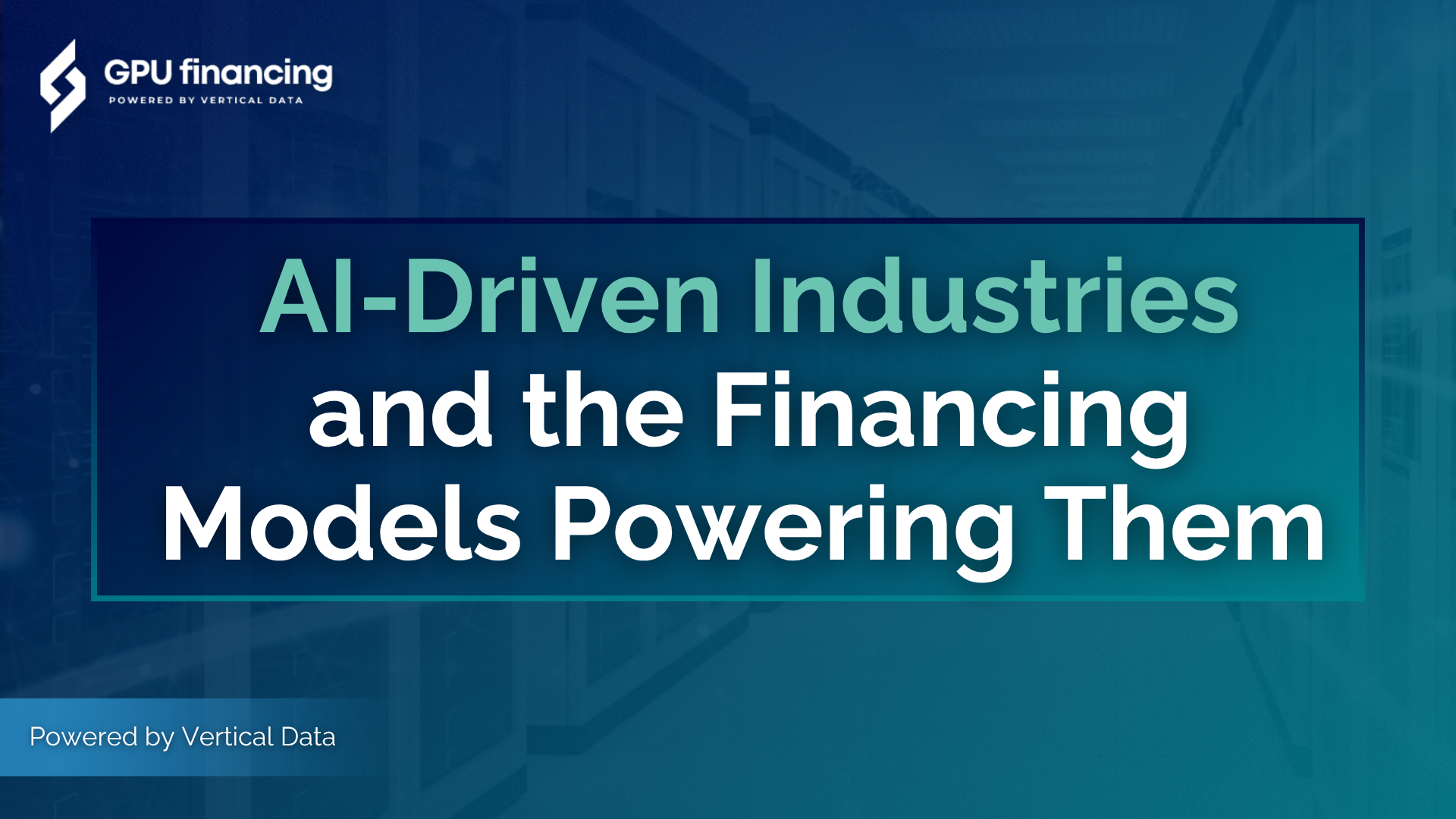Introduction
Artificial intelligence is reshaping entire industries, but the engine driving this transformation (high-performance GPU hardware) comes with a significant price tag. While the potential for AI is vast, the practical ability to harness it often comes down to a company’s access to powerful computing resources. Different sectors have unique computational demands, from the high-stakes, real-time processing required in finance to the massive parallel workloads of medical research. This article explores how four key industries (healthcare, finance, automotive, and gaming) are leveraging AI, and how flexible financing models are making these innovations accessible.
Healthcare: Accelerating Discovery and Diagnostics
In healthcare, AI is not just improving efficiency; it is saving lives. GPUs are at the heart of this transformation, powering everything from advanced medical imaging to genomic sequencing and drug discovery. For example, AI algorithms trained on GPUs can analyze medical images like MRIs and CT scans with a level of accuracy that can meet or even exceed that of human radiologists. Deep learning models have demonstrated the ability to detect melanoma with 95% sensitivity, a significant leap in early diagnosis.
However, the computational cost is immense. This is where financing becomes critical. For a hospital or research institution, an outright purchase of a large GPU cluster is a massive capital expenditure. Flexible financing, such as an operating lease, allows these organizations to access state-of-the-art hardware for a predictable monthly cost, aligning expenses with research grants and operational budgets. This model enables them to stay at the forefront of medical innovation without crippling their finances.
Financial Services: Speed and Precision at Scale
The financial services industry operates on speed and data. AI, powered by GPUs, is delivering both in spades. High-frequency trading firms use GPU-accelerated AI to analyze market data and execute trades in microseconds. Banks are deploying AI for real-time fraud detection, with some institutions reporting a 40x increase in the speed of their risk calculations after implementing GPU-based solutions. According to Gartner, 90% of finance functions will deploy at least one AI-enabled technology solution by next year.
The challenge in this sector is the need for constant, reliable, high-performance computing. Major financial institutions like JPMorgan Chase report GPU utilization rates of approximately 70% around the clock when integrating GPUs into their global computing infrastructure. For these firms, financing is not just about acquiring hardware; it’s about ensuring continuous access to the best technology. A technology refresh clause in a financing agreement is a powerful tool, allowing a firm to upgrade its hardware mid-lease to maintain a competitive edge.
Automotive: The Road to Autonomous Driving
The automotive industry is in the midst of a massive transformation, with AI at the core of the push toward autonomous vehicles. The computational demands are staggering. An autonomous vehicle is essentially a data center on wheels, processing a constant stream of data from cameras, LiDAR, and other sensors to make real-time decisions. This requires a sophisticated in-car AI technology stack, including powerful GPUs for edge computing.
The development and testing of these autonomous systems also require massive GPU clusters for simulation and model training. For automotive companies and their suppliers, the R&D investment is enormous. Financing allows these companies to spread the cost of this essential hardware over the long development cycles typical of the automotive industry. This helps them manage cash flow while still investing in the cutting-edge technology necessary to compete.
Gaming: Creating Immersive Worlds
The gaming industry has always been a pioneer in GPU technology, and AI is pushing the boundaries even further. Modern game development relies on AI for everything from creating realistic non-player characters (NPCs) to generating vast, procedurally-created worlds. Current generation GPUs, including the NVIDIA GeForce RTX series, are designed with AI in mind, enabling features like real-time ray tracing and AI-powered graphics upscaling.
For game development studios, access to the latest hardware is a creative necessity. However, the cost of outfitting a team of developers with high-end GPUs can be substantial. Financing allows studios to equip their teams with the best tools for a manageable monthly cost, fostering creativity and innovation without breaking the bank. This is especially critical for smaller, independent studios that are competing with industry giants.
Conclusion
The transformative power of AI is being felt across every industry, but the high cost of GPU hardware remains a significant barrier. Flexible financing models are breaking down this barrier, providing companies in healthcare, finance, automotive, gaming, and beyond with access to the cutting-edge tools they need to innovate. By aligning the cost of hardware with its useful life and providing a clear path for upgrades, financing is not just a financial tool; it is a strategic enabler of the AI-driven future.

